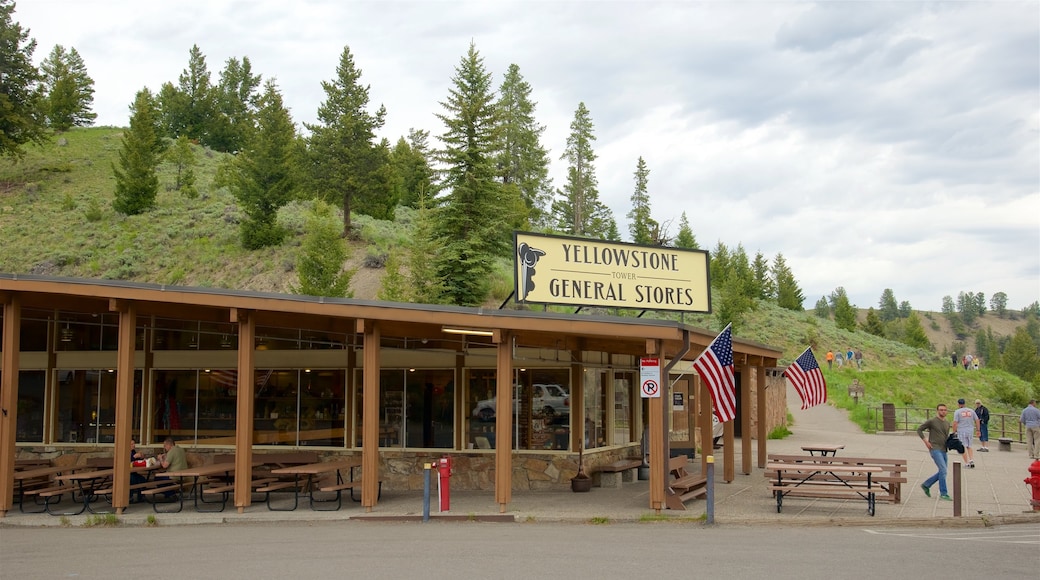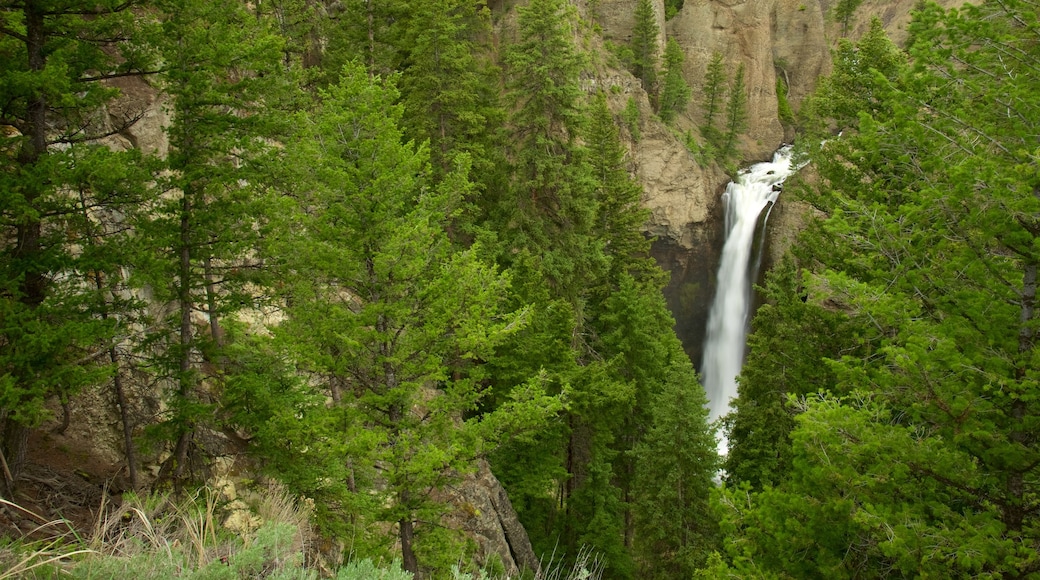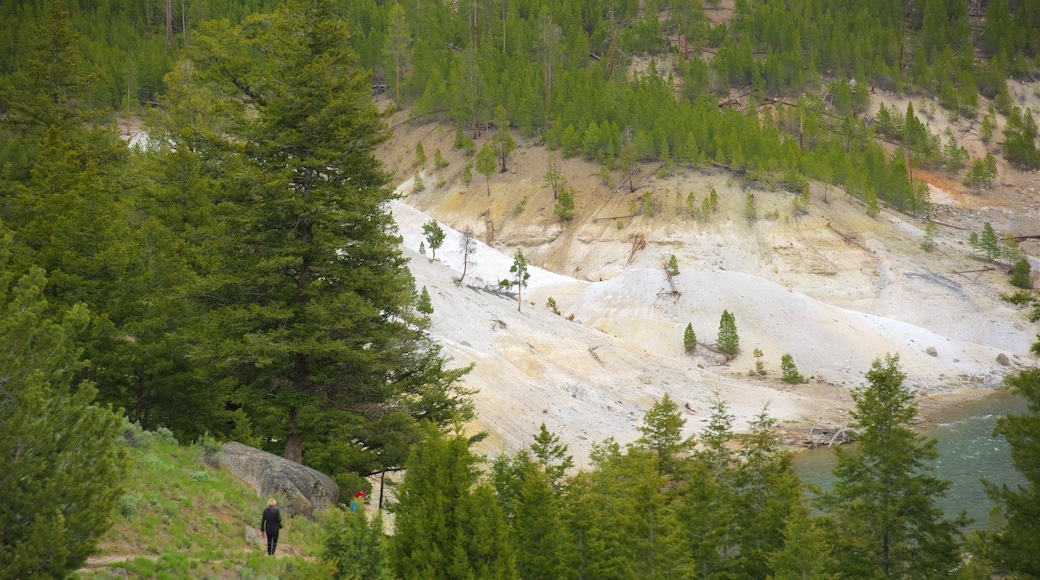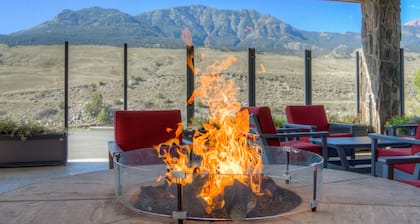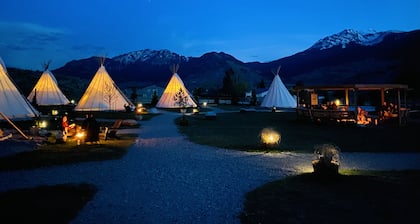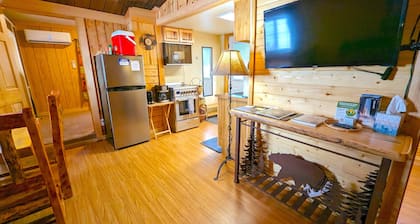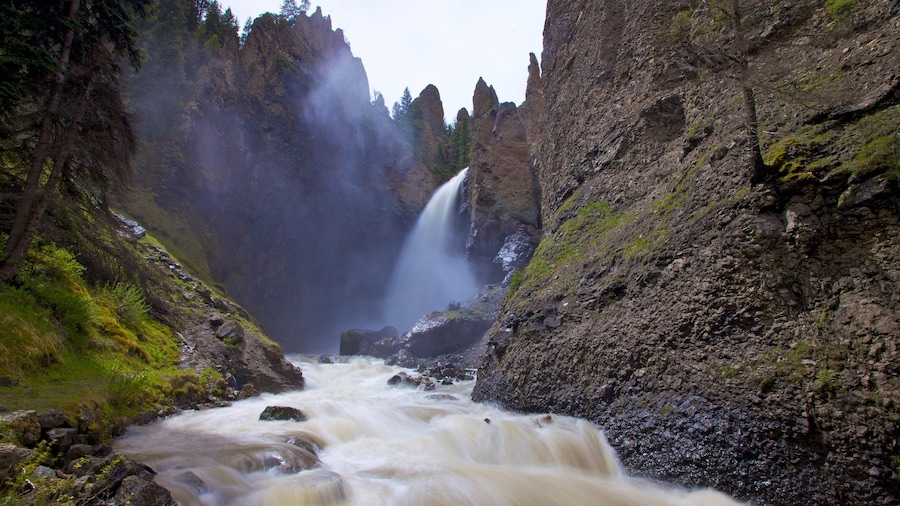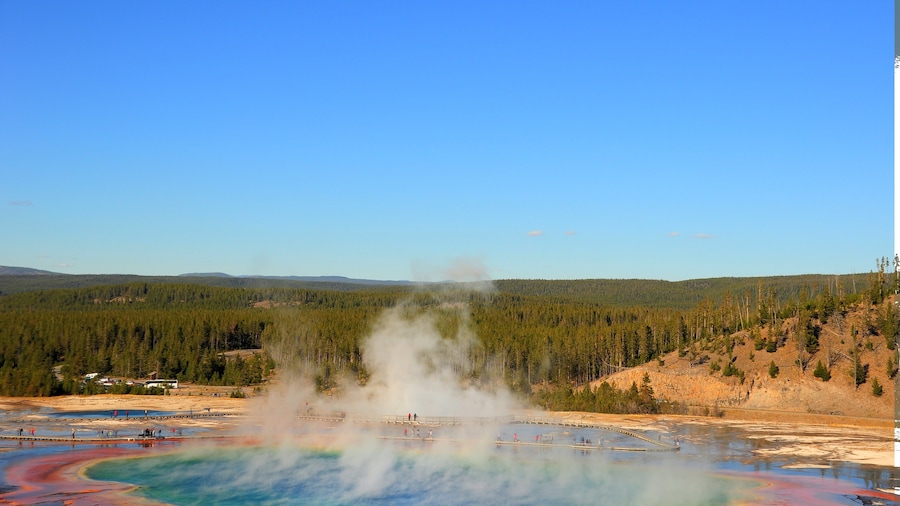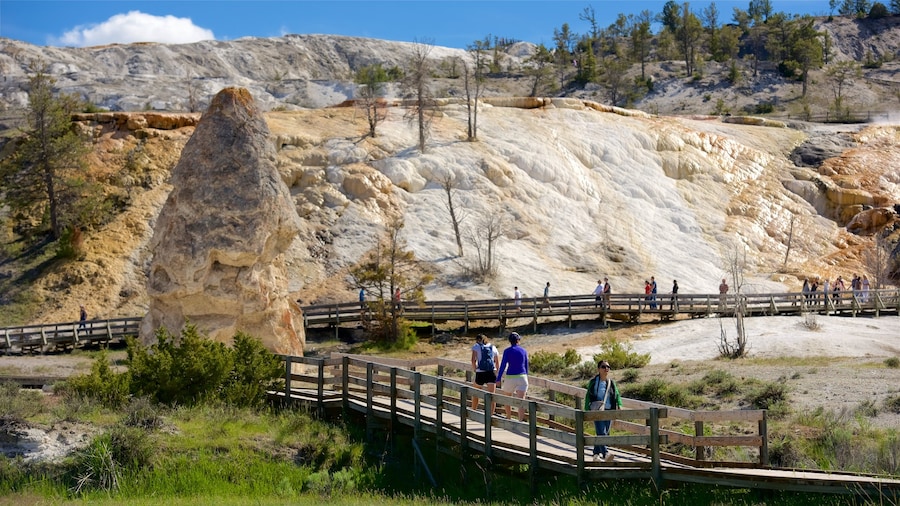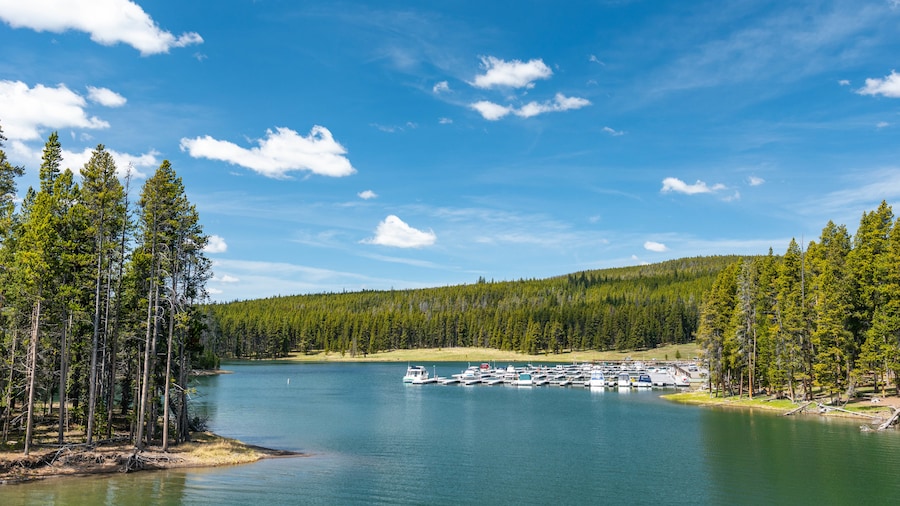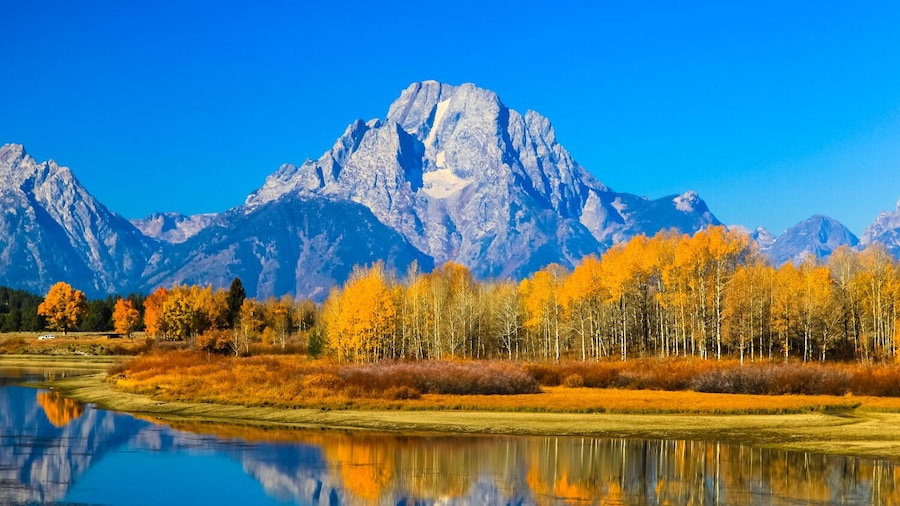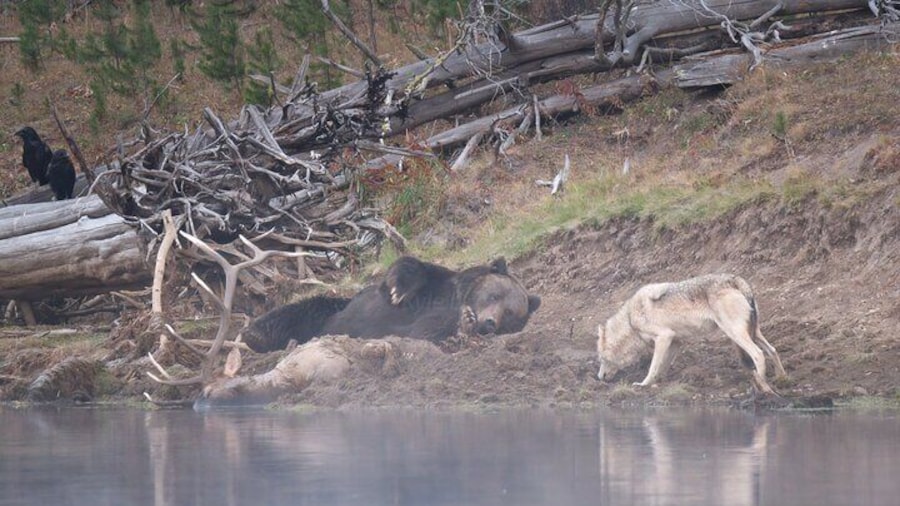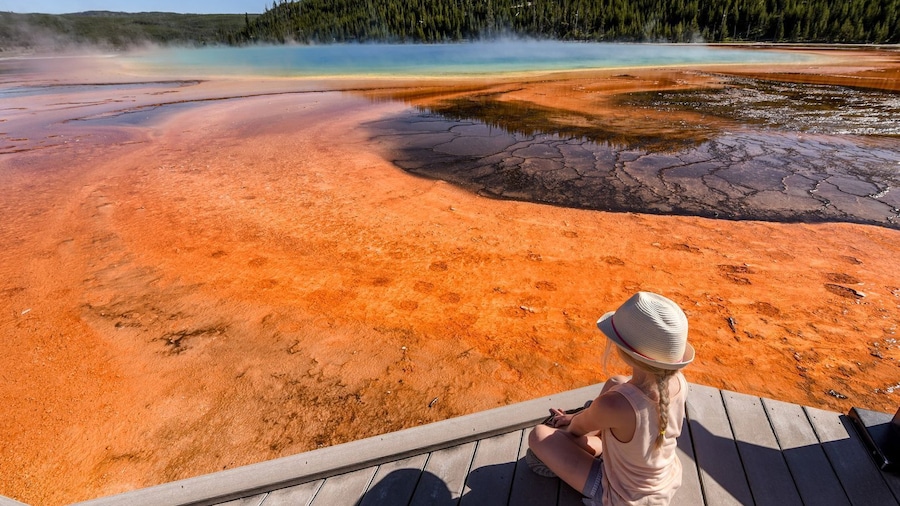Use Tower Junction as a jumping-off point to explore the northeastern section of Yellowstone National Park. Largely untouched by humans, it feels much like the Wyoming that Theodore Roosevelt experienced when he camped here in 1903. Explore rustic cabins, admire majestic waterfalls and see a variety of wildlife.
Appreciate Yellowstone as the 26th president of the United States experienced it. Roosevelt Lodge is located near a campsite used by Theodore Roosevelt. Relax in the log cabins, which date back to 1920. The serenity of the wilderness surrounds you as you sit on a rocking chair on the front porch. Go on a horseback trail ride or stagecoach adventure. Dine in Roosevelt Lodge or enjoy the popular Old West Dinner Cookout.
Visit Tower Fall, one of Yellowstone’s most iconic natural landmarks. The falls features a dramatic 132-foot (40-meter) drop and is flanked by unique rock columns to the north. They were made famous in 1871, through photography by William Henry Jackson, paintings by Thomas Moran and sketches by Henry Elliot, made during the Hayden scientific expedition. The area’s beauty struck viewers in Congress, leading to the creation of Yellowstone National Park, the country's first national park, the following year.
To see Tower Fall, drive 2.2 miles (3.7 kilometers) south of Tower Junction. Find a dedicated viewpoint a short walk from the parking area. Continue on past the Tower Fall overlook to see Tower Creek flowing into the majestic Yellowstone River.
Find the Petrified Tree, a natural curiosity of Yellowstone National Park, about 2 miles (3 kilometers) west of Tower Junction. Now more a tall stump than a tree, the Petrified Tree still stands where it grew millions of years ago. After being covered by volcanic ash, it was subsequently petrified or fossilized and now serves as a reminder of the area’s ancient history.
As you explore Tower Junction and the surrounding area, watch for bighorn sheep, bison, peregrine falcons, osprey and other wildlife. You are more likely to see black bears than grizzlies in the area however, follow park guidelines for safe viewing of any of the region’s wildlife.
